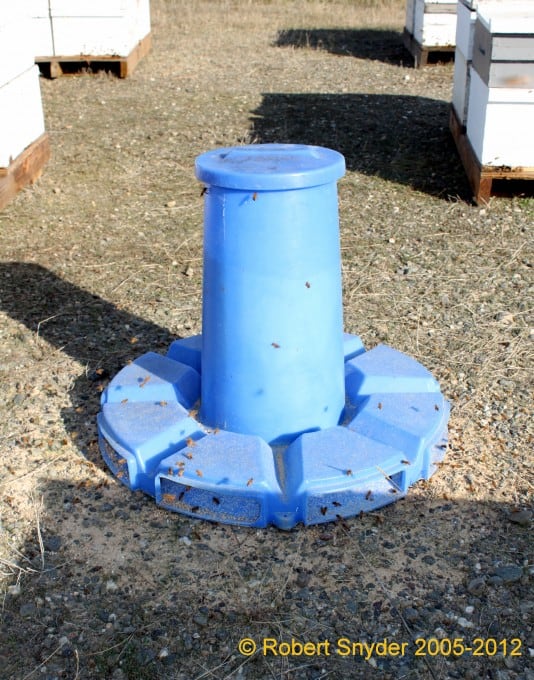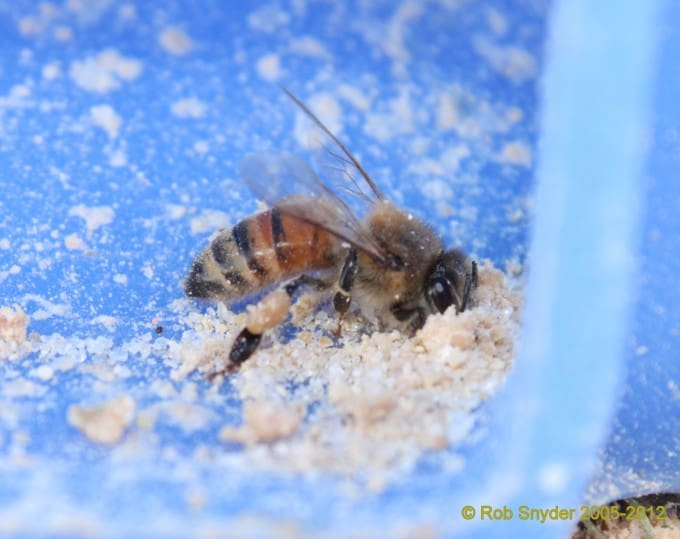
In this blog I will talk about nectar, pollen and my theories on how honey bees utilize pollen/substitute patties and dry pollen substitute. So why do honey bees collect pollen? It would be hard to ask this question without asking why they collect nectar. Honey bees collect nectar from the nectaries of plants, which are glands that produce nectar. A honey bee uses her proboscis (mouthparts) to lap up nectar from flowers. There are some flowers in which the bee’s proboscis is not long enough to extract nectar, one example is the honey suckle flower. With this flower, bumblebees will chew a hole in the base of the flower to extract nectar, honey bees will secondarily visit the bumblebee’s hole to extract what nectar is left. With other deep flowers, the honeybee’s proboscis is not long enough to reach the nectar and more adapted insects such as Lepidoptera can take advantage of the nectar source or vertebrates, such as hummingbirds, can take a drink.
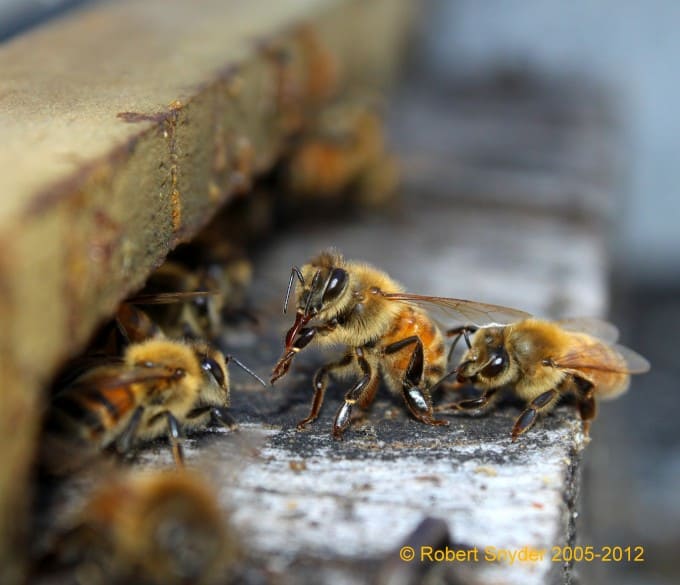
So what is nectar? Nectar is comprised of approximately 20% sucrose, 79% water and 1% other substances (vitamins, minerals, pigments, etc). Sucrose is also a very important product of photosynthesis in plants and is vital as an active messenger that relays information on the energy status of individual tissues. Honey bees use the enzyme invertase to catalyze the breakdown (hydrolysis) of the disaccharide sucrose in the honey stomach. It is broken down into two main monosaccharide’s glucose (dextrose) and fructose (levulose). These two monosaccharaides are more easily digested by honey bees. There are also some other sugars involved but these two are the most notable. They then distribute this “transformed” nectar around the edges of the brood nest to evaporate moisture from it. They will increase the rate of evaporation by fanning the nectar until the moisture content is 18.6% or less. If the moisture content is below 17%, it should not crystallize but this also depends on the amount of glucose in the nectar. Once the moisture content is low enough, the bees will cap the honey for storage. Honey is the bee’s main source of carbohydrates.
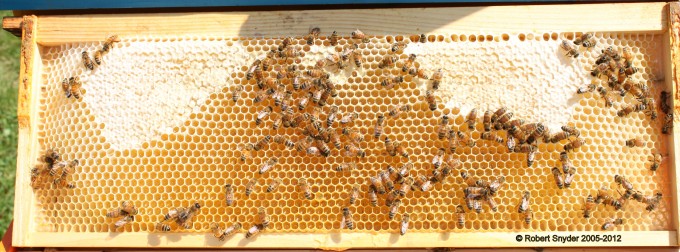
Now that we know what nectar is comprised of we can start to look at pollen, its nutritional value and how it’s collected. So when talking about pollen you think, “where does it come from?” Pollen comes from the male reproductive structure called the stamen. The stamen consists of a filament and an anther. The pollen is on the anther. The movement of this pollen to the stigma (female reproductive structure) is pollination but that is another topic in its own. So how do bees collect pollen? It all starts when a worker bee flies near the flower. The movement of indirect flight muscles (visit my blog on Insect flight for more information) causes a buildup of static throughout the bee. Conveniently the bee’s entire body is covered with tiny hairs including the compound eyes so when the bee lands on a flower there is a static-cling effect where the pollen jumps onto the hairs on the bee. From here, the bees use their front legs to groom the pollen onto flat depressions surrounded by curved spines on the tibia of the rear leg. This depression is called the corbicula or pollen basket. It takes approximately 8-16 minutes for a bee to fill its pollen baskets. Once the pollen basket is filled the bee will return to the hive. Drones (male bees) lack this pollen basket and do not collect pollen.
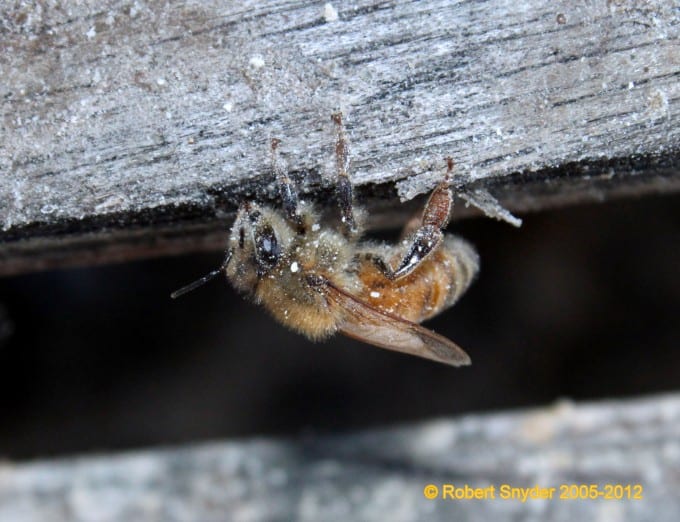

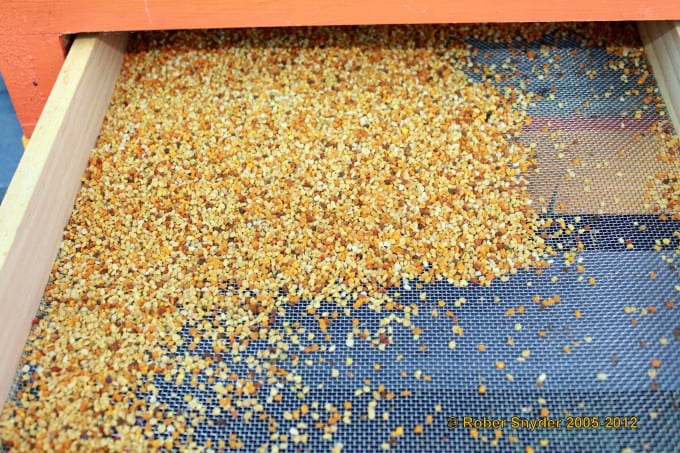
What do bee’s use pollen for? Pollen is a bee’s main source of protein and is necessary for queen vitality and brood production. Pollen consists of proteins (chains of amino acids), lipids (fats), minerals, and vitamins. Before bees use pollen, they add nectar to the packed pollen and it goes through lactic acid fermentation. This process changes the properties of the pollen and allows the pollen to be stored in cells for a longer period of time without deteriorating like natural pollen in a cell would. At this point, it is now called bee bread. An interesting fact about pollen vs. bee bread is that regular pollen lacks vitamin K but once it has gone through lactic acid fermentation vitamin K is present. Why is this important? Vitamin K is important because it aids in protein biosynthesis (manipulating amino acids into new proteins). This may be important for royal jelly quality?
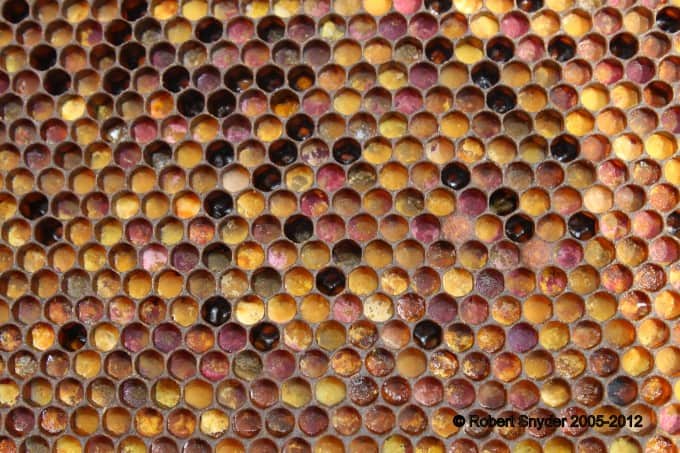

Back to pollen vs. bee bread: I have always thought lactic acid fermentation occurred once the pollen was placed in the cell. However, recent studies show that there were traces of lactic acid bacteria in the honey stomach indicating that bee bread is possibly fermented in the honey stomach. To me this made a lot of sense because I always wondered, “Where does a pollen patty/pollen substitute go, what do the bees do with it?” But if they are fermenting it into bee bread (in the honey stomach) and utilizing it right away, it would be hard to detect except where you see increased amounts of royal jelly in the 2-3 day old larvae cells). I will go off topic a little here to talk about royal jelly to explain my previous statement. Royal Jelly is a protein-rich secretion that the worker bees feed to 2-3 day old larvae of drones and workers. The royal jelly also contains lipids, vitamins hormones, minerals, enzymes and other life-sustaining compounds. The queen is fed this substance her entire life and it is the single reason how she became a queen in the first place. Royal jelly contains royalactin which is the single protein that triggers the development of ovaries in a diploid egg which then eventually transforms into a queen. This is why pollen/pollen supplement feeding is important for queen vitality. The queen needs a constant supply of protein rich (many different amino acids) royal jelly. Where is royal jelly made and what bees make it? The worker bee’s hypopharyngeal gland in the head is the production plant of royal jelly. Though this gland is not developed soon as they emerge, the gland develops to full size within 6-12 days depending if sufficient pollen is in supply for the worker bee to utilize. Therefore if there is not a sufficient amount of pollen, the whole colony is malnourished as well as the most vital part, the queen. This is also the reason many times why a colony will not re-queen itself properly; there is an insufficient amount of protein rich pollen to support the cells. Now back to the dry pollen supplement.

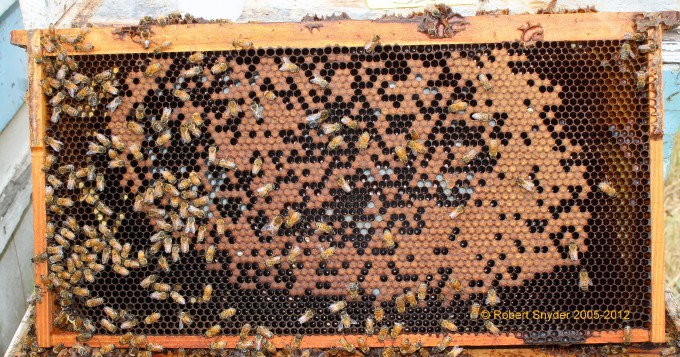
But then what happens when bees are fed dry pollen substitute? If you have been in a yard when they are being fed dry pollen substitute you can open a hive and see the pollen packed into the cells. I would guess the bees are saving this pollen until they have enough nectar/water to convert the powder into “bee bread.” Once converted it is used in the same way as a “wet” pollen patty. I have included some images of bees with pollen and dry pollen substitute on their corbicula.

